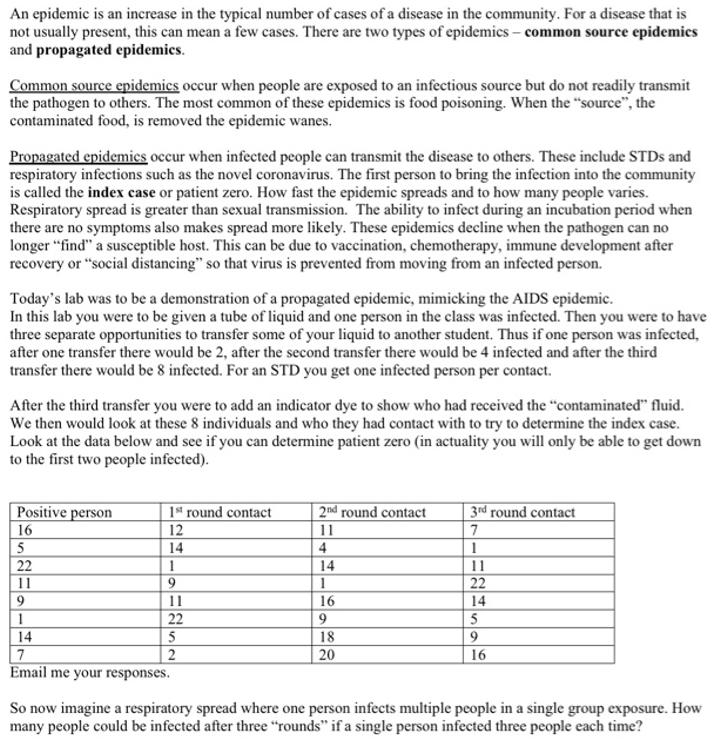Answered step by step
Verified Expert Solution
Question
1 Approved Answer
An epidemic is an increase in the typical number of cases of a disease in the community. For a disease that is not usually

An epidemic is an increase in the typical number of cases of a disease in the community. For a disease that is not usually present, this can mean a few cases. There are two types of epidemics common source epidemics and propagated epidemics. Common source epidemics occur when people are exposed to an infectious source but do not readily transmit the pathogen to others. The most common of these epidemics is food poisoning. When the "source", the contaminated food, is removed the epidemic wanes. Propagated epidemies occur when infected people can transmit the disease to others. These include STDS and respiratory infections such as the novel coronavirus. The first person to bring the infection into the community is called the index case or patient zero. How fast the epidemic spreads and to how many people varies. Respiratory spread is greater than sexual transmission. The ability to infect during an incubation period when there are no symptoms also makes spread more likely. These epidemics decline when the pathogen can no longer "find" a susceptible host. This can be due to vaccination, chemotherapy, immune development after recovery or "social distancing" so that virus is prevented from moving from an infected person. Today's lab was to be a demonstration of a propagated epidemie, mimicking the AlIDS epidemic. In this lab you were to be given a tube of liquid and one person in the class was infected. Then you were to have three separate opportunities to transfer some of your liquid to another student. Thus if one person was infected, after one transfer there would be 2, after the second transfer there would be 4 infected and after the third transfer there would be 8 infected. For an STD you get one infected person per contact. After the third transfer you were to add an indicator dye to show who had received the "contaminated" fluid. We then would look at these 8 individuals and who they had contact with to try to determine the index case. Look at the data below and see if you can determine patient zero (in actuality you will only be able to get down to the first two people infected). Positive person 16 1st round contact 12 2nd round contact 3rd round contact 11 7 14 4. 22 1 14 11 11 9 1 22 9 11 16 14 22 5 5 14 18 9 20 7 Email me your responses. 16 So now imagine a respiratory spread where one person infects multiple people in a single group exposure. How many people could be infected after three "rounds" if a single person infected three people each time?
Step by Step Solution
★★★★★
3.45 Rating (165 Votes )
There are 3 Steps involved in it
Step: 1
It is likely that there will be several candidates for pati...
Get Instant Access to Expert-Tailored Solutions
See step-by-step solutions with expert insights and AI powered tools for academic success
Step: 2

Step: 3

Ace Your Homework with AI
Get the answers you need in no time with our AI-driven, step-by-step assistance
Get Started


